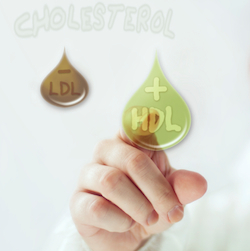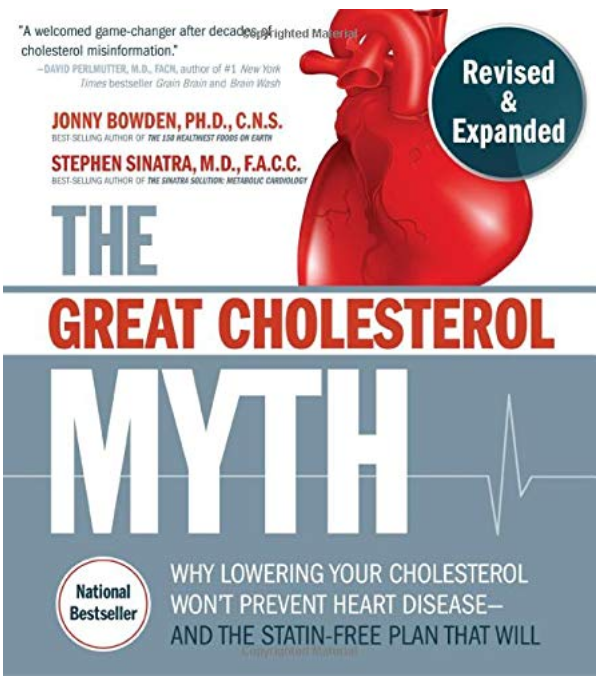Assessing levels of high-density lipoprotein (HDL) cholesterol is already a standard part of formulas used to predict cardiovascular risk. However, a new test that measures the anti-inflammatory function of HDL cholesterol may provide additional information that is independent of the quantity of HDL.

If the results are confirmed in broader populations and a simpler test is developed for clinical use, adding anti-inflammatory capacity to risk scores may improve risk prediction and help people take steps to protect themselves against heart disease.
This new test may be good judge of how HDL particles reduce inflammation and thus predict who is at heightened risk to develop cardiovascular disease caused by narrowed arteries, according to research published in the American Heart Association’s flagship journal Circulation.
“HDL are very complex particles with anti-atherosclerotic functions that are not reflected by measuring just the cholesterol quantity,” said senior study author Uwe J.F. Tietge, M.D., Ph.D., professor and head of the division of clinical chemistry at the Karolinska Institute in Stockholm, Sweden. “Atherosclerosis [plaque build-up in the arteries] underlying cardiovascular disease is increasingly recognized as a disease with a strong inflammatory component, and a central biological function of HDL is to decrease inflammation.”
Participants included 680 white adults (average age of 59, 70% male) living in the Netherlands who were part of a large population study that began in 1997. All were healthy when they enrolled in the study. From the larger study participants were identified who’d had a first cardiovascular disease event before the end of the study follow-up. HDL particles were analyzed in 340 people who experienced a first fatal or non-fatal heart attack, were diagnosed with heart problems caused by narrowed heart arteries (ischemic heart disease) or who required a procedure to open clogged coronary arteries during the median 10.5-year follow-up period. These participants were matched to a control group of 340 people of the same age (within 5 years), sex, smoking status and HDL cholesterol levels who had no cardiovascular events during follow-up.
Several lab tests were performed for all participants at enrollment, including measuring the ability of isolated HDL particles to decrease the inflammatory response of endothelial cells lining blood vessels (called the anti-inflammatory capacity). Researchers also measured C-reactive protein, a substance that rises when there is more inflammation throughout the body, and cholesterol efflux capacity, a laboratory assessment of how efficiently HDL can remove cholesterol from cells that resemble those found in plaque.
The researchers found the following about the anti-inflammatory function of HDL cholesterol:
- HDL anti-inflammatory capacity was significantly higher in people who remained healthy (31.6%) than in those who experienced a cardiovascular event (27%);
- The association of anti-inflammatory capacity with cardiovascular events was independent of the established biomarkers of HDL cholesterol and C-reactive protein levels, and was also independent of cholesterol efflux capacity;
- For every 22% increase in the ability of HDL particles to suppress inflammation in endothelial cells, participants were 23% less likely to have a cardiovascular event during the next decade;
- The amount of protection from increased HDL anti-inflammatory capacity was higher in women than in men; and
- Risk prediction was improved by adding HDL anti-inflammatory capacity to the Framingham Risk Score, or by replacing HDL cholesterol levels with this new measure of HDL function.

For more on changing opinions of cholesterol, see post by Jonny Bowden, PhD, CNS The Cholesterol Myth: Why Doctors are Becoming More Skeptical About Cholesterol Numbers.
“By using a novel research tool, our results provide strong support for the concept that plaque buildup in the arteries has an inflammatory component, and that the biological properties of HDL particles have clinical relevance to cardiovascular disease risk prediction,” said Tietge.
“The HDL cholesterol level is a good, established, simple and cost-efficient CVD risk biomarker. Our results, however, demonstrate that the anti-inflammatory capacity or assays looking at HDL function in general have the potential to provide clinically relevant information beyond the static HDL cholesterol measurements that are currently used,” Tietge said.
The findings also raise the possibility that therapies to improve HDL anti-inflammatory capacity may be developed and used to lower heart disease risk.
Although the results raise intriguing possibilities for improved screening, the results must be confirmed in different populations. Study limitations to be considered include that the study population was white and genetically similar, thus results cannot be applied to other race and ethnic groups. In addition, the researchers did not include stroke incidence in their analysis so conclusions cannot be drawn about HDL and stroke.




